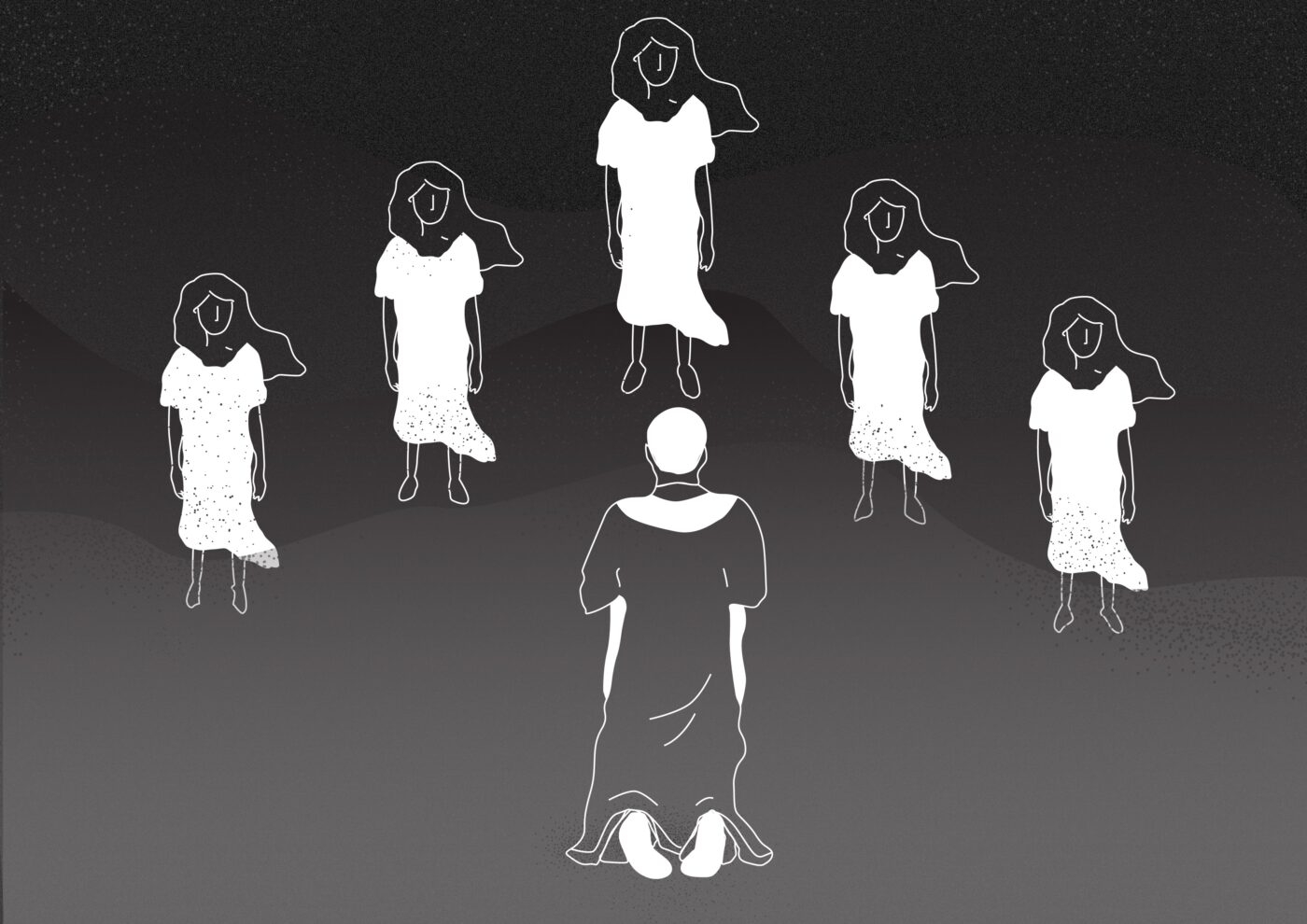In 1985, Cardinal Prefect Joseph Ratzinger wrote in a letter to ordinaries about the increase of prayer groups that gather to seek “deliverance from the influence of demons.” Belonging to the Congregation for the Doctrine of Faith, Ratzinger was raising awareness of the Church approved process of expelling demons: the sacramental rite of exorcism.
33 years after Ratzinger’s letter, the Vatican is set to address increasing demand for exorcisms in what they are calling a “pastoral emergency”. As many as 250 priests from 50 different countries attended an exorcism training course in Italy, where half a million people have reportedly claimed demonic possession.
Last year, the Archdiocese of Manila reported a likewise rise in local demonic possessions and subsequent requests for exorcisms, leading to a renewed focus on the controversial practice.
The Devil’s in the details
Although the act of exorcism is not a sacrament, the Vatican in 1999 released the Official Rite of Exorcism, an outline of the entirety of the process, including specific prayers, bible verses to be recited, and instructions for the priest to attend mass and go to confession before the exorcism itself.
“[This must be done] for the intention that he is going to do this in order to dispose [of] himself spiritually,” explains Timoteo Jose Ofrasio, SJ, an ordained priest and a lecturer at the Loyola School of Theology.
Jose Lorenzo*, a former apprentice to an exorcist and now professor at the Loyola Schools, explains that true victims demonstrate a clear set of symptoms from demonic possession. For instance, they are repulsed by holy objects–such as blessed salt or holy water–and are suddenly, inexplicably capable of speaking dead languages like Latin or Ancient Greek.
The process begins with the victim undergoing tests that prove that the case is unquestionably valid for exorcism. This can range from medical and psychological exams to a series of interviews. Once the case has been validated, an ordained priest acting as the official exorcist, along with a team of trained individuals, conducts the exorcism proper.
“The person has to be lying down, candles have to be properly lit,” Lorenzo explains. “A relic and a cross have to be present, and holy water and salt have to be there too. [Then] that’s the time when [the] prayers are recited together.”
According to Lorenzo, the litanies and prayers said during exorcisms necessitate a specific series of crosses and blessings. This is why it is crucial that only an ordained priest with the power to exorcise given by a bishop can conduct the rite. As lives and the well-being of people are put at stake, the process leaves little room for mistakes.
Oh, ye of little faith
Documented in the Gospels are stories that see Christ “rebuking” demons from ill persons. In Matthew 17:14-30, a man brings to Christ his son suffering from “seizures” and falling “into the fire or into the water”. Jesus’ response is to admonish the man for his disbelief and banishes the demon inside the boy. When the disciples ask Jesus how he could drive out the demon when they could not, he says, “Because you have so little faith.” But what qualifies a case for an exorcism?
The Church has come a long way from acquainting “seizures” with diabolic possession. Before any exorcism takes place, a psychiatrist first attends to the victim to see if the problem is more psychological instability rather than religious disturbance. But in the case of genuine demonic possessions, Ofrasio advises extreme caution.
“That’s why the Church has training,” he says. “We have to be very careful because if it is a real, truly diabolic possession, the evil spirit can take over also the priest.”
Lorenzo likewise stresses that the rite of exorcisms calls for a specific understanding and performance of faith. Since the rites that are the foundation of exorcisms predate the 1983 Canon Law, Lorenzo explains that exorcisms are premised on the beliefs of Vatican I, where the Church’s involvement in the war between Heaven and Hell—God and the Devil—is emphasized.
It is the belief of the Church that demonic possessions and hauntings are strategic moves by the Devil in his campaign against the Christian God. The fact that he is able to penetrate the souls of believers is an insult to Him.
“You don’t get possessed all of a sudden,” Lorenzo reasons. “Your faith is weakened in the process, and the weakening of the faith becomes the access.” This entails first seeing shadows, objects moving on their own, and other such irregularities so that the faith of a person is steadily diminished. “Ibig sabihin, sumuko ka na talaga (what that means, is that you gave up). The person who is being threatened has succumbed to the fear and only then can the possession take place.”
Fear, then, is the key. Those steadfast in their belief have no reason to be afraid as it is their faith that keeps them safe and it is only by straying that they put themselves in danger.
Lorenzo recounts a specific case** he experienced. While he was presiding over a class activity of a certain high school, a student was possessed and suddenly yelled, “Nandiyan na sila (There they are)!” Before anyone could ask who she was referring to, she knelt down and began hitting her head on the floor.
He explains that her possession stimulated four other female students so that in the end, he was faced with five different students suffering from demonic possession. “They all fainted and then they all stood up all of a sudden,” Lorenzo retells. “I was in the middle of the group. And biglang, ‘Ang tagal tagal ka na naming hinahanap. Nandito ka lang pala. Papatayin ka namin! Papatayin ka namin!’”
(We have been looking for you for so long. We’re going to kill you! We’re going to kill you!)
The possessions went on for three days. The experience strained the students and the Lorenzo himself, who shares that it was this event that pushed him to let go of his apprenticeship. He learned later on that all five of those girls had undergone abortions. The trauma and emotional pain that they were grappling with affected them deeply.
“Guilt is the one that kills us,” he says. “Guilt is never how God operates. Sorrow and shame, yes, because sorrow and shame [push] you to become a better person. But guilt traps you.”
Shrouded legacy
To this day, the future of exorcisms remains unclear, with many aspects influencing the popularity of its usage. A crucial factor that affected how it is perceived today is linked to one of the biggest events in Church history.
On October 11, 1962, Pope John XXIII called for the Second Vatican Council, or simply Vatican II, which made notable reforms in the Church. As social aspects of theology were emphasized, the Church opened its doors to adjust to the modern world.
Following the advent of Vatican II and addressing signs of the times, the Catholic Church began to regard evil as expressed in oppressive social structures. The Devil is seen more often in the rise of poverty, the degradation of women, the abandonment of children than in the form of an evil spirit that enters an unwilling body.
“Very traditional theology is often not popular,” Lorenzo states. “Many set [exorcisms] aside and reduce it to merely psychological issues. But this does not discount the fact that there is a growing number of cases.”
Lorenzo also emphasizes that those who don’t believe simply fail to see the tricks and disguises of the devil. “The Devil need not take the form of a red man with horns, and bat wings, and tail,” Lorenzo says, “The Devil can be the most good-looking person you know.”
Despite all the past reformations of the Church, the demand for exorcisms have steadily risen in the US, in European countries, and even in the Philippines in recent years. The causes of these occurrences are debatable, but there are a few theories on why this is happening.
One is the Pope Francis effect—the Pope’s remarks on the personhood of Satan and the role of exorcists in combating “the Devil’s works” has reinvigorated a practice that has largely fallen out of popularity.
These days, mass awareness of exorcisms is attributed more to its presence in popular culture. Films on the subject like The Exorcism of Emily Rose (2005), The Conjuring (2013), and The Nun (2018) abound the horror genre. However, Lorenzo also explains how the films themselves could make a person more susceptible to possession.
“It’s not encouraged to watch because these films are occult films and in the theology that constituted the rites of exorcisms and the like, occultism in any form is not allowed,” Lorenzo elaborates.
Occult acts, such as the use of ouija boards, tarot cards, or psychic mediums, are believed to be open invitations to the Devil. This means more possessions, and, consequently, more victims seeking exorcists.
Besides the popularization of exorcisms and occult practices, priests point out the general loss of faith as another cause. A lack of belief in God leads a person astray from his path. There has been a steep decline of mass attendances in Europe and the US. Additionally, 31% of Americans claim to have grown up in a Catholic household, but only 21% identify as Catholic now.
Tracing these practices back to their roots, exorcisms remain an integral part of Catholic rituals. Varying factors shape the path this age-old practice will take, but until then, people continue to grasp their own understanding of this ritual.
Lorenzo reminds, “Ignatius, in his Spiritual Exercises, constantly asks us—which side do you want to be in? Which standard do you want to be behind?”
EDITOR’S NOTES:
*Jose Lorenzo’s religious name has been used to protect his identity.
**Specific details of the incident, including the students’ names, their high school, the location, and nature of the activity have been withheld to preserve confidentiality.







